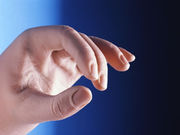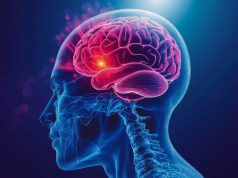With help of sensor-laden glove, non-affected hand used to regain some control of affected hand
FRIDAY, Sept. 9, 2016 (HealthDay News) — A new form of electrical stimulation therapy can help restore some dexterity to a hand that’s been paralyzed by stroke, according to a study published online Sept. 8 in Stroke.
Jayme Knutson, Ph.D., an assistant professor of physical medicine and rehabilitation at the Case Western Reserve University School of Medicine in Cleveland, and colleagues conducted a clinical trial involving 80 stroke survivors. For 12 weeks, half the survivors received electrical stimulation therapy using a new mirroring therapy (contralaterally controlled functional electrical stimulation [CCFES]). The other half also used an electrical stimulator, but in standard therapy that mechanically opened and closed the inert hand with no input from the brain (cyclic neuromuscular electrical stimulation [cNMES]). Both groups used their assigned electrical stimulator on their own at home for 10 hours a week. They also spent three hours a week practicing hand tasks with an occupational therapist in the lab.
The researchers found that patients who received the new therapy experienced markedly better improvement than those in the control group. They were able to move an average of 4.6 blocks more than they had prior to therapy, compared with an improvement of 1.8 blocks for those who received standard therapy. Improvement was greatest for patients who received the new therapy less than two years following their stroke. These patients experienced an improvement of 9.6 blocks on the dexterity test, compared to a 4.1-block improvement in the standard therapy group. By the end of the treatment, 97 percent of patients who received the new therapy felt they could use their hand better than at the start of the study.
“Our aim was to compare the effects of CCFES with cNMES,” the authors write. “CCFES improved hand dexterity more than cNMES in chronic stroke survivors.”
Copyright © 2016 HealthDay. All rights reserved.








